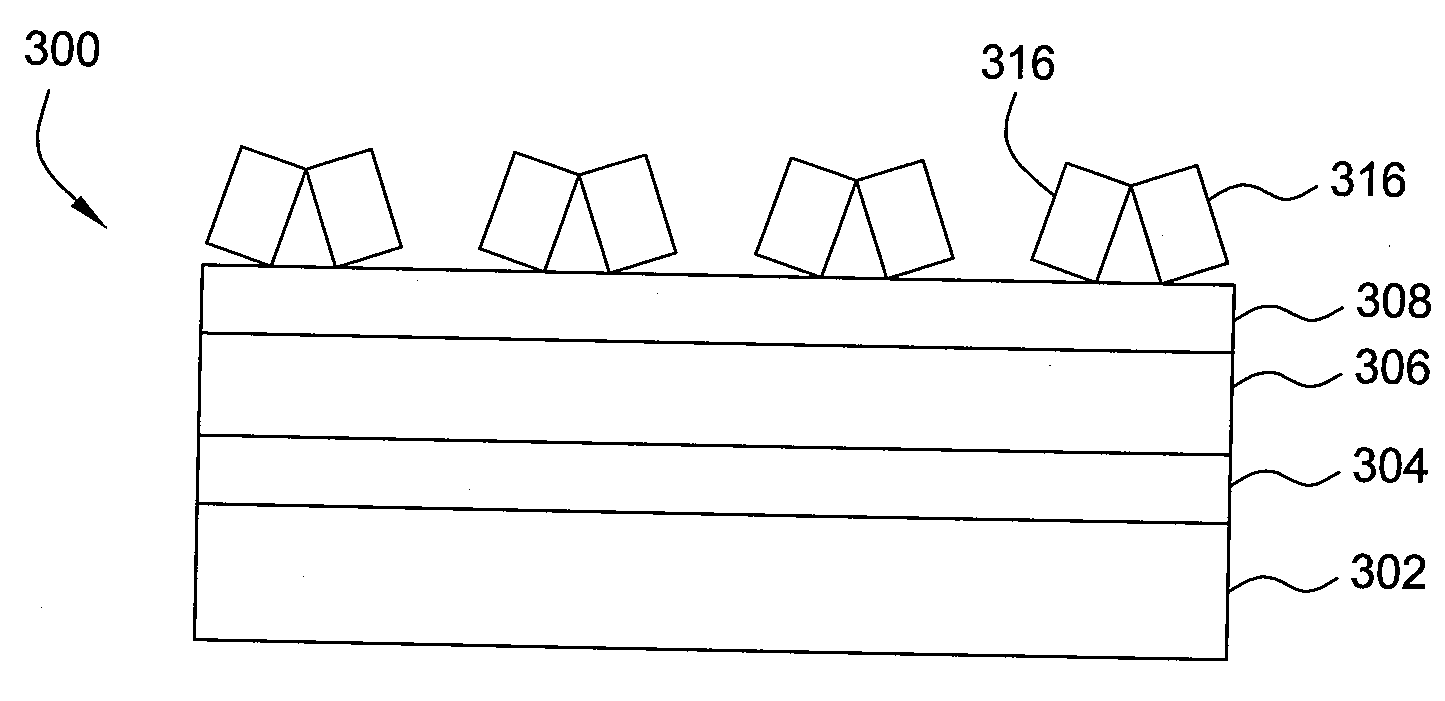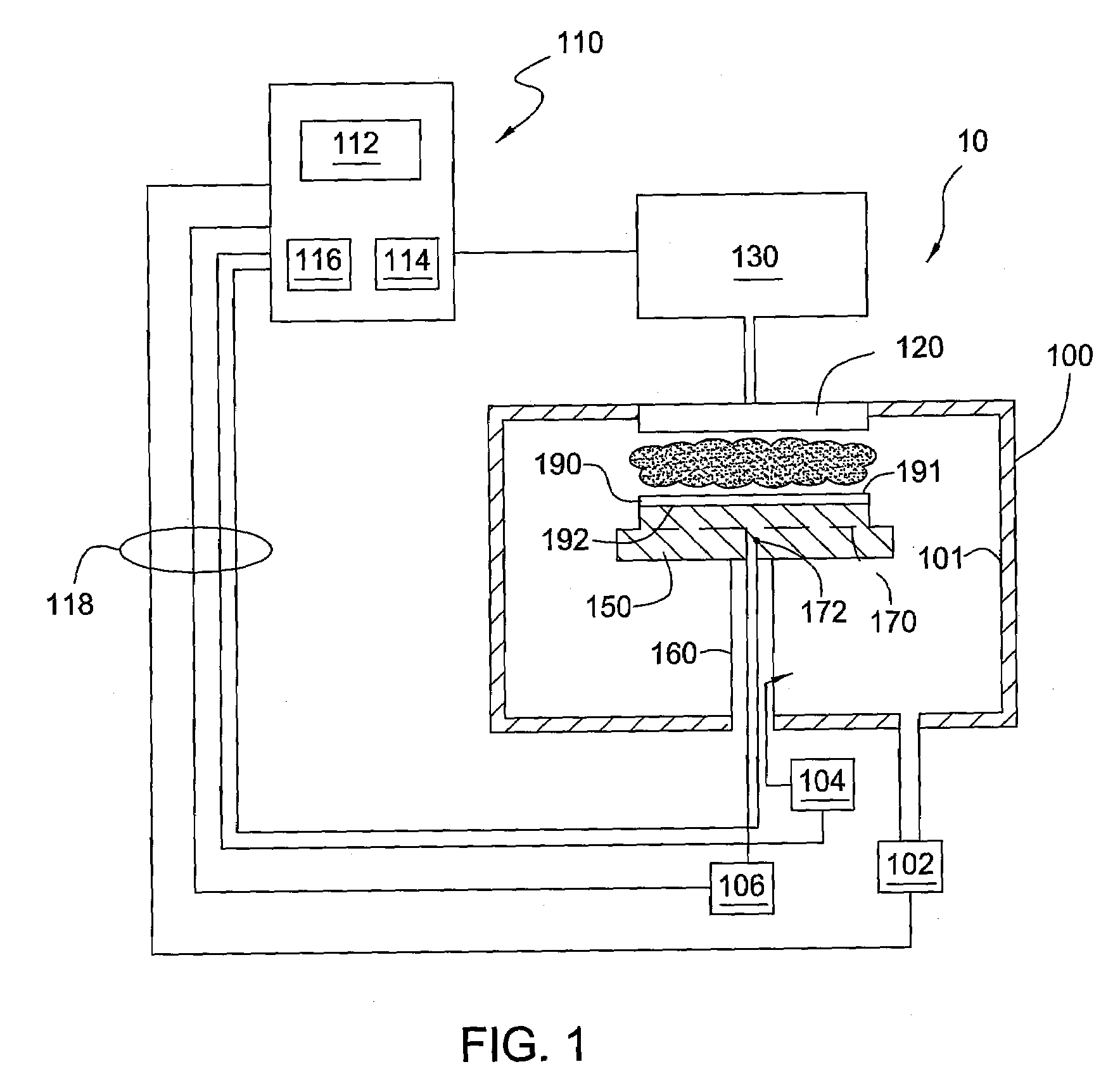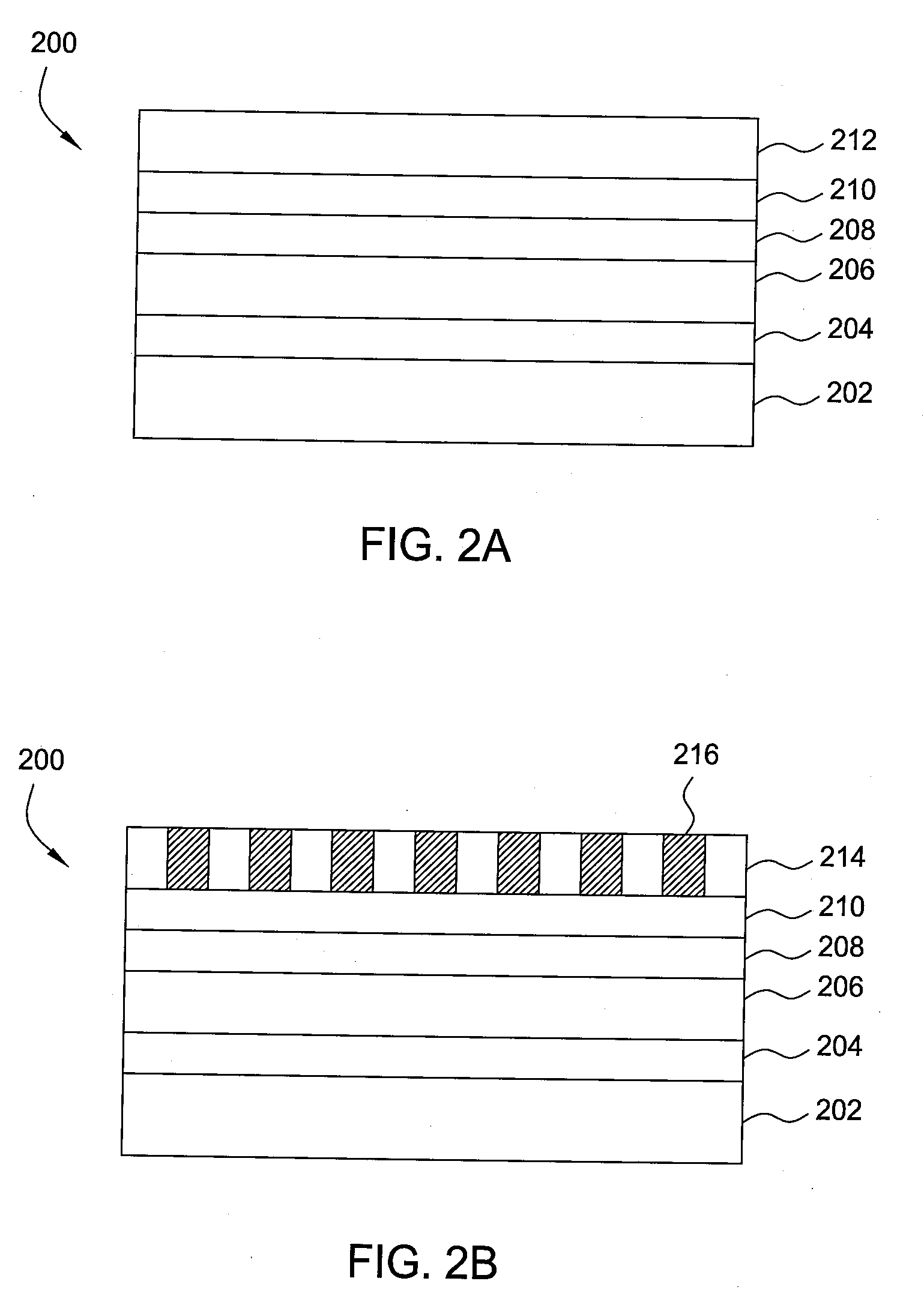Plasma surface treatment to prevent pattern collapse in immersion lithography
- Summary
- Abstract
- Description
- Claims
- Application Information
AI Technical Summary
Benefits of technology
Problems solved by technology
Method used
Image
Examples
example 1
[0034]A hermetic oxide layer was deposited over a substrate having a layer stack consisting of a material layer, an amorphous carbon layer, and an ARC layer. The hermetic oxide layer was deposited at a temperature of 350 degrees Celsius and a pressure of 6 Torr. Process gases of 60 sccm silane and 9,900 sccm carbon dioxide were introduced into the chamber along with 10,000 sccm helium while the showerhead was biased with an RF frequency of 180 MHz and the substrate support was biased with an RF frequency of 180 MHz. The hermetic oxide layer was deposited to a thickness of 500 Angstroms. The hermetic oxide layer had tensile stress of 177 MPa when deposited. When the hermetic oxide layer was exposed to an atmosphere having 85 percent humidity at 85 degrees Celsius for 1 day, the oxide layer's stress changed to 176 MPa for a change in stress of 1 MPa. The hermetic oxide layer was stable and hence, the hermetic oxide layer did not fail under conditions designed to replicate deionized wa...
example 2
[0035]A hermetic oxide layer was deposited over a substrate having a layer stack consisting of a material layer, an amorphous carbon layer, and an ARC layer. The hermetic oxide layer was deposited at a temperature of 400 degrees Celsius and a pressure of 7 Torr. 50 sccm silane and 9,900 sccm carbon dioxide were introduced into the chamber along with 10,000 sccm helium while the showerhead was biased with an RF frequency of 140 MHz and the substrate support was biased with an RF frequency of 40 MHz. The hermetic oxide layer was deposited to a thickness of 2,741 Angstroms. The hermetic oxide layer had compressive stress of −214 MPa when deposited. When the hermetic oxide layer was exposed to an atmosphere having 85 percent humidity at 85 degrees Celsius for 1 day, the oxide layer's stress changed to −215 MPa for a change in stress of 1 MPa. The hermetic oxide layer was stable and hence, the hermetic oxide layer did not fail under conditions designed to replicate deionized water rinsin...
example 3
[0036]A hermetic oxide layer was deposited over a substrate having a layer stack consisting of a material layer, an amorphous carbon layer, and an ARC layer. The hermetic oxide layer was deposited at a temperature of 400 degrees Celsius and a pressure of 7 Torr. 50 sccm silane and 9,900 sccm carbon dioxide were introduced into the chamber along with 10,000 sccm helium while the showerhead was biased with an RF frequency of 140 MHz and the substrate support was biased with an RF frequency of 40 MHz. The hermetic oxide layer was deposited to a thickness of 2,827 Angstroms. The hermetic oxide layer had compressive stress of −200 MPa when deposited. When the hermetic oxide layer was exposed to an atmosphere having 85 percent humidity at 85 degrees Celsius for 1 day, the oxide layer's stress changed to −201 MPa for a change in stress of 1 MPa. The hermetic oxide layer was stable and hence, the hermetic oxide layer did not fail under conditions designed to replicate deionized water rinsin...
PUM
 Login to View More
Login to View More Abstract
Description
Claims
Application Information
 Login to View More
Login to View More - R&D
- Intellectual Property
- Life Sciences
- Materials
- Tech Scout
- Unparalleled Data Quality
- Higher Quality Content
- 60% Fewer Hallucinations
Browse by: Latest US Patents, China's latest patents, Technical Efficacy Thesaurus, Application Domain, Technology Topic, Popular Technical Reports.
© 2025 PatSnap. All rights reserved.Legal|Privacy policy|Modern Slavery Act Transparency Statement|Sitemap|About US| Contact US: help@patsnap.com



